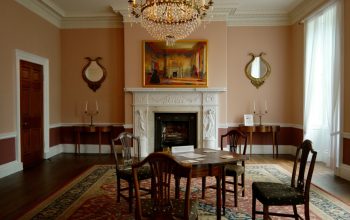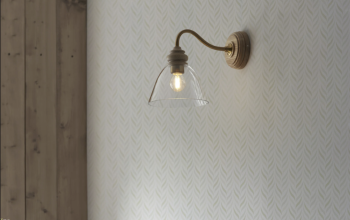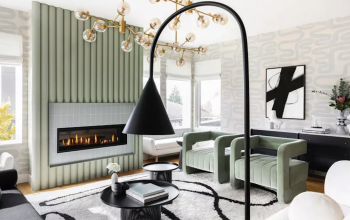When selecting pendant lights for a space, it is crucial to consider the room’s style and layout. The overall aesthetic goal should guide the choice of pendant lights to ensure they complement the existing decor. For modern, minimalist spaces, sleek and simple designs with clean lines are often appropriate.
Traditional or rustic interiors may benefit from more ornate or vintage-inspired pendant lights. The size and layout of the room also play a significant role in pendant light selection. Large, open-concept areas may accommodate larger, statement-making pendant lights, while smaller rooms or those with lower ceilings typically require more understated fixtures to avoid overwhelming the space.Totcy
It is important to consider the existing decor and furniture when choosing pendant lights. Rooms with wood furniture and warm tones may benefit from pendant lights with similar aesthetics to create a cohesive look. For eclectic or bohemian styles, mixing and matching different pendant light designs can create a personalized appearance.
By carefully considering these factors, one can select pendant lights that not only provide adequate illumination but also enhance the overall design of the room.
Considering Size and Scale
Proportionate Size for a Balanced Look
The size of pendant lights is crucial to consider when selecting the perfect fixtures for your space. The lights should be proportionate to the size of the room and the furniture within it. For instance, if you have a large dining table, you’ll want to choose larger pendant lights that can effectively illuminate the entire table and make a visual impact.
Considering Ceiling Height and Visual Weight
The height of your ceilings is another important factor to consider when choosing pendant lights. For higher ceilings, longer pendant lights can fill the vertical space and create a sense of balance in the room. On the other hand, shorter pendant lights are more suitable for lower ceilings to avoid creating a cramped or crowded feeling. Additionally, consider the visual weight of the pendant lights, as heavier, bulkier fixtures can make a strong visual statement, while lighter, more delicate ones can create a more subtle and airy feel.
Striking the Right Balance for a Harmonious Design
It’s essential to strike the right balance between size and scale to ensure that the pendant lights not only provide adequate lighting but also enhance the overall aesthetic of the room. Consider how the size and scale of the pendant lights will interact with the other elements in the room to create a harmonious and balanced design. By doing so, you can create a space that is both functional and visually appealing.
Selecting the Right Material and Finish
The material and finish of your pendant lights can have a significant impact on the overall look and feel of your space. When selecting pendant lights, consider the existing materials and finishes in the room and choose pendant lights that complement or contrast with them in a visually appealing way. For example, if you have a lot of metal accents in the room, you may want to choose pendant lights with a similar metal finish to create a cohesive look.
Alternatively, if you have predominantly wood furniture, you might want to opt for pendant lights with a contrasting metal finish for added visual interest. Consider the durability and maintenance of different materials as well. If you’re choosing pendant lights for high-traffic areas or outdoor spaces, you’ll want to opt for materials that are durable and easy to clean.
For example, glass or metal pendant lights are often easier to maintain than fabric or paper shades. Additionally, consider how different materials will interact with light and shadow in the room. Glass or crystal pendant lights can create beautiful reflections and patterns when illuminated, while metal or wood pendant lights can add warmth and texture to the space.
When selecting the right material and finish for your pendant lights, also think about the overall aesthetic you’re trying to achieve. If you have a more industrial or modern style, you may want to opt for sleek, metallic finishes like brushed nickel or chrome. For a more natural or rustic look, consider materials like wood or rattan.
The material and finish of your pendant lights can significantly impact the overall design of your space, so it’s important to choose carefully to achieve the desired aesthetic.
Exploring Different Types of Pendant Lights
There are various types of pendant lights available, each with its own unique design and functionality. Understanding the different types of pendant lights can help you make an informed decision when selecting the right option for your space. Some common types of pendant lights include bowl pendants, drum pendants, mini pendants, multi-light pendants, and linear pendants.
Bowl pendants feature a bowl-shaped shade that directs light downward, making them ideal for providing focused task lighting in areas like kitchen islands or dining tables. Drum pendants have a cylindrical shade that diffuses light evenly throughout the space, making them suitable for general ambient lighting in living rooms or bedrooms. Mini pendants are smaller in size and are often used in multiples to create visual interest and provide targeted lighting in areas like hallways or entryways.
Multi-light pendants feature multiple light sources grouped together on a single fixture, making them ideal for illuminating larger spaces or creating a dramatic focal point in rooms with high ceilings. Linear pendants have a long, narrow shape and are often used over kitchen islands or dining tables to provide even illumination across the entire surface. Exploring different types of pendant lights will help you determine which style best suits your needs and complements your space.
In addition to these common types of pendant lights, there are also various specialty options available, such as lantern pendants, globe pendants, and cluster pendants. Lantern pendants feature an open frame design reminiscent of traditional lanterns and are often used in entryways or outdoor spaces to create a welcoming ambiance. Globe pendants have a spherical shade that diffuses light in all directions, making them suitable for providing soft ambient lighting in living rooms or bedrooms.
Cluster pendants consist of multiple individual pendants grouped together on a single canopy, creating a visually striking installation that can serve as a focal point in modern or eclectic spaces.
Utilizing Pendant Lights for Function and Ambiance
Pendant lights can serve both functional and aesthetic purposes in your space. When considering how to utilize pendant lights, think about the specific lighting needs of each area in your home and how pendant lights can help fulfill those needs. For example, in kitchens or dining areas, pendant lights can provide focused task lighting over work surfaces or dining tables.
In living rooms or bedrooms, they can be used to create ambient lighting that enhances the overall atmosphere of the room. Consider using dimmer switches with your pendant lights to have more control over the level of illumination in different areas of your home. This allows you to adjust the brightness of the pendant lights according to specific activities or moods.
For example, you can dim the pendant lights in your living room for a cozy movie night or brighten them up for entertaining guests. Utilizing pendant lights for both function and ambiance will help you create a versatile lighting scheme that meets your specific needs while enhancing the overall design of your space. In addition to their practical function, pendant lights can also serve as decorative elements that add visual interest and personality to your space.
Consider using pendant lights as statement pieces that reflect your personal style and enhance the overall aesthetic of the room. Whether you opt for bold, sculptural designs or more understated, minimalist styles, pendant lights can become focal points that elevate the design of your home.
Budgeting for Your Pendant Light
Determining the Upfront Cost
When budgeting for pendant lights, it’s essential to consider the upfront cost of purchasing the fixtures. Start by determining how many pendant lights you’ll need for each area in your home and set a budget based on the number of fixtures required. Keep in mind that larger or more intricate designs may come with a higher price tag, so factor in any additional costs associated with specific styles or materials.
Installation Expenses
In addition to the cost of purchasing the pendant lights themselves, consider any expenses related to installation. If you’re planning on hiring a professional electrician to install the fixtures, be sure to get quotes for their services and factor this into your budget. If you’re comfortable with DIY installation, make sure you have all the necessary tools and equipment on hand before starting the project.
Ongoing Maintenance Costs
Finally, think about ongoing maintenance costs when budgeting for your pendant lights. Some materials may require more frequent cleaning or upkeep than others, so consider any additional expenses related to maintaining the fixtures over time.
Making Informed Decisions
By carefully budgeting for your pendant lights and considering all potential costs upfront, you can make informed decisions that align with your financial goals while still achieving the desired look and functionality in your home.
Installation and Maintenance Tips
Proper installation and maintenance are essential for ensuring that your pendant lights not only look great but also function safely and efficiently. When installing pendant lights, always follow manufacturer instructions carefully and consult with a professional electrician if needed. Make sure that all electrical connections are secure and that the fixtures are properly supported to prevent any accidents or damage.
When it comes to maintenance, regularly clean your pendant lights to keep them looking their best and functioning properly. Use a soft cloth or duster to remove dust and debris from the fixtures, taking care not to use abrasive materials that could scratch or damage delicate surfaces. If your pendant lights have glass shades or intricate details, consider using a gentle glass cleaner to maintain their clarity and shine.
Additionally, check for any signs of wear or damage over time and address any issues promptly to prevent further problems. Loose wires or connections should be tightened immediately, and any damaged parts should be replaced as soon as possible. By staying proactive with installation and maintenance, you can ensure that your pendant lights continue to enhance your space safely and beautifully for years to come.
In conclusion, choosing pendant lights for your home involves careful consideration of factors such as space and style, size and scale, material and finish, types of pendant lights, function and ambiance, budgeting considerations, as well as installation and maintenance tips. By understanding these key elements and making informed decisions based on them, you can select pendant lights that not only provide effective lighting but also enhance the overall design and atmosphere of your space. Whether you’re looking for practical task lighting in your kitchen or statement-making fixtures in your living room, there are endless options available to suit your specific needs and preferences.
With thoughtful planning and attention to detail, you can find the perfect pendant lights that elevate your home’s aesthetic while meeting your functional requirements.



